The USS George Herbert Walker Bush (CVN-77) is the latest aircraft carrier of the United States Navy and the last descendant of the USS Nimitz-class . The 41st president of the United States of America gave the name of the ship not only for being a (former) president but also due to the role as young naval aviator during the 2nd World War. In the 1940s George HW Bush was a pilot on the Grumman TBM Avenger in the Pacific Ocean, the callsign of the ship is appropriately 'Avenger'. The ship has a motto 'Freedom at work'.
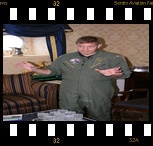
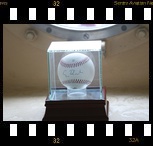
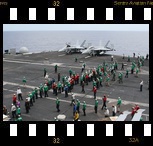
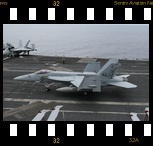
After transferring more than 6 billion dollars to the bank-account of the famous Newport News shipyard the US Navy added the USS Bush in 2009 as 10th nuclear aircraft carrier of the Nimitz class. There are differences between the first USS Nimitz (CVN-68, designed in the 1960s and delivered in 1975) and the USS Bush (CVN-77), as the world of naval aviation has changed a lot. Compared to the various types (A-6, A-7, EA-6B, F-4, F-14, S-3, F-18) in the US Navy inventory of those days, the USS Bush now has an all F-18 based airwing onboard. In 30 years of naval aviation, ideas and doctrines have changed
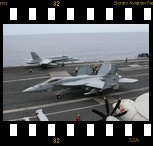
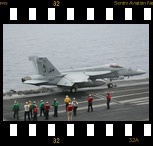
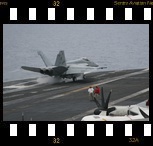
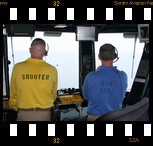
This is reflected in a number of changes to the USS Bush, regarding the predecessor USS Nimitz of 1975
- The number and the location of the refueling and arming points have been redesigned and relocated to reduce the number of sailors on deck
- The island (the building on the deck) has been increased in size and moved to the rear for better overview on the deck
- The sanitation system has been renewed; fresh water (instead of the corrosive sea water) is used to flush the toilets, waste-water that will retrieved by a vacuum system comparable to the a toilet onboard of a commercial airliner.
- Updates in electronics and avionics, introduction of network, wifi and fiber-optics all over the ship
- Redesigned and smarter arresting gear that notices the weight of the landing aircraft and adjusts the restraining force automatically
- Reduction of the radar signature of the ship, by adding changes to the deck, hull and island.
- Redesignof the blast-deflectors
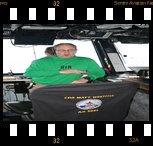
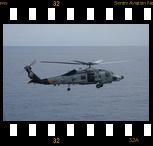
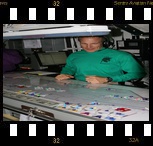
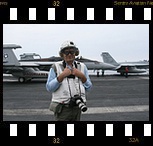
1st cruise
After the commissioning of the USS Bush in 2009, a very thorough shakedown testphase' was performed of over a year, where the complete ship from bow to stern and from top to bottom was tested for reliability and durability. And after the normal carrier working-up phase, the maiden cruise started in May 2011 departing the homeport of Norfolk (Virginia,USA), sailing into the control zone of the US Navy 6th Fleet. First stop was the United Kingdom where the ship participated in the exercise saxon Warrior' . Then a transit followed into the Mediterranean Sea with a short portstop in Cartagena ( Spain) and a 4 day long visit to Naples (Italy) and after the Naples visit the transition through the Suez canal will bring the USS Bush into the area of operation of the US Navy 5th Fleet for operations in the Middle-East region.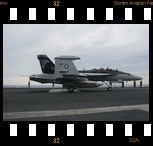
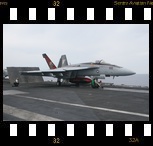
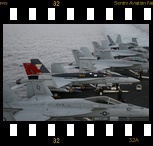
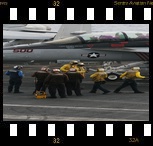
CVW-8
Carrier Air Wing Eight (CVW-8) is the naval airwing assigned to this first cruise of the USS Bush. After 'losing' the Grumman F-14 Tomcat in the 2005-2006 cruise onboard of the USS Roosevelt ('Last Tomcat cruise'), VF-31 'Tomcatters' and VF-213 'Black Lions' traded in their Tomcats for Boeing (McDonnel Douglas) F/A-18 E/F SuperHornets while renaming to VFA-31 and VFA-213. And after the last cruise of CVW-8 on the USS Roosevelt in 2008-2009, the venerable Grumman EA-6B Prowler of VAQ-141 (Electronic Attack Squadron 141, 'Shadowhawks') was replaced by the Boeing EA-18G Growler. From that moment on, CVW-8 consisted of only F-18 jets (VFA-15 and VFA-87 with the 'older' F/A-18s, VFA-31 with F/A-18E SuperHornet (single-seater), VFA-213 with F/A-18F SuperHornet (double-seater) and VAQ-141 with the EA-18G Growler. This all-F-18-wing concept will reduce the operational costs as there is much communality between the F-18s, with logistic communality of up to 70-80% between the F/A-18 E, F and G subtypes.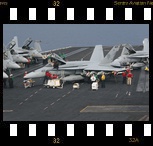
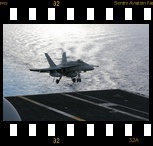
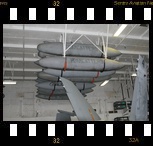
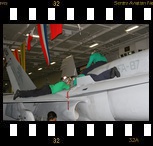
For the deck-crew, the all F-18-wing has a number of advantages, as dimensions and maintenance are more or less the same. The deck-planners of Flight Deck Control (who prepare/handle all aircraft on deck via the 'Ouija –board', using washers, nuts and pins to mimic the status of the aircraft: (un)armed,(un)fueled, etc) prefer this type standardization. Because the larger and heavier F-14 Tomcats and EA-6B Prowlers gave sometimes some maneuvering restrictions; and the weight of a fully loaded, fueled and armed F-14 Tomcat could sometimes outclass the pulling force of a deck-tractor.
In the past, the older aircraft were often assigned to the
role of flying gasstation for aerial refueling, a role the S-3 Viking performed
during the last years in naval service. Today, the new F/A-18E/F's are equipped
with centerline fuelpods to refuel their buddy F/A-18s, the VFA-31 F-18E's use refueling
pods with the emblem of 'Felix the cat' next to a fuelpump. The more powerful
SuperHormets can carry 4 wingtanks with 1 centerline refueling pod while they
can defend themselves with missiles and canons, canceling the number of
defenders that were needed for the unarmed S-3's and KA-6's in the early days.
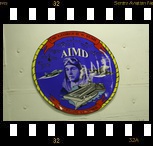
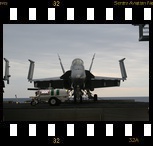
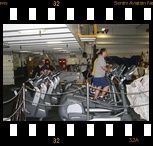
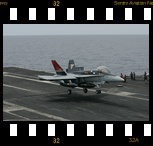
Visit
The visit to the USS Bush started at the airport of Mallorca (Spain), where a C-2 Greyhound (COD, Carrier Onboard Delivery) of VRC-40 detachment 5, flew towards the carrier. An hour after take-off, a holding pattern near the carrier was entered and gradually the descent towards the carrier was initiated. During the landing phase the crew shouted 'Here we go' at ¾ of a mile (after the pilots 'called the ball') and a few seconds later the tailhook grasped the arresting cable, stopping the C-2 from a speed of over 105 miles per hour within the boundaries of the flight deck.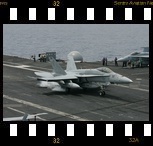
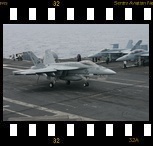
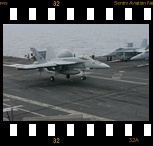
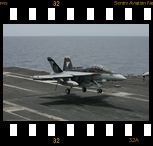
After a tailhook-landing with the C-2 Greyhound an interview with 'the big boss' Capt Brian 'Lex' Luther was held in the 'George Bush room'. This room was decorated using photos of a room in the Bush mansion and when George HW Bush visited this room, he and his wife felt at home directly. The walls are decorated with photos from the various stages in his life and a signed baseball is located in one of the portholes.
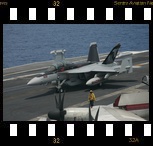
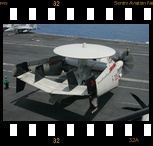
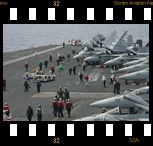
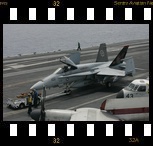
Captain Luther spent a previous cruise as XO (Executive Officer) on the USS Nimitz (CVN-68), before transferring as a CO (Commanding Officer) on the USS Bush. Serving on the first nuclear carrier USS Nimitz of the Nimitz-class and now serving on the last carrier of the Nimitz-class, he described himself as the 'Alpha and Omega' man of the carrier-class. He could describe the differences of more than 30 years of these carriers. Less steam, more electronics; a larger island, located more to the stern; a new balancing system to stabilize the ship; other locations for refueling and arming the aircraft; intelligent recovery system, that measures and adjusts the arresting force automatically . The total cost of ownership was reduced, so less aircraft and less personnel was needed to fulfill the same task.
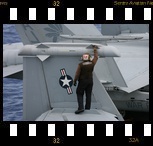
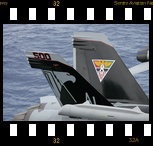
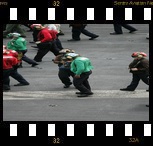
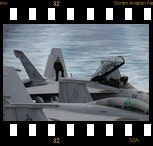
After the maiden-cruise, the USS Bush will be finished to the latest standards, one of the finishing touches is adding the multi-barrel guns for close-distance self-defense. The emblem of the USS Bush consist of a circle with 41 stars, for being the 41st president of the USA. A picture of the aircraft-carrier itself and a composed picture of 3 aircraft type:
- the silhouette of a TBM Avenger that George HW Bush flew during the 2nd World War
- the silhouette of an F-18, depicting the current fighter
- the silhouette of an F-35 'Joint Strike Fighter', the future aircraft type to fly on the USS Bush in a few years.
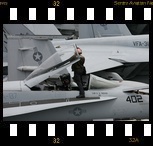
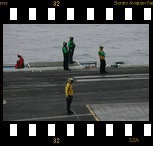
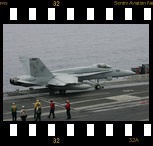
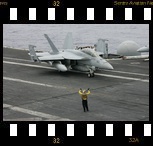
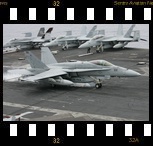
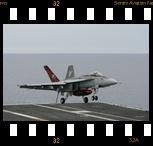
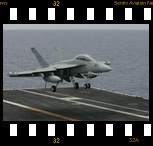
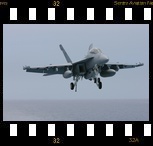
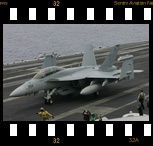
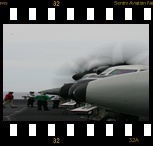
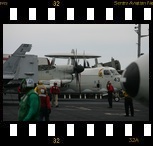
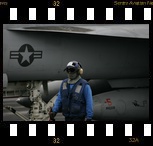
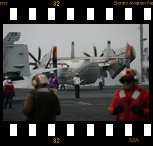
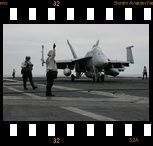
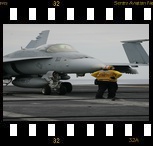
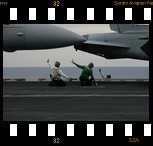
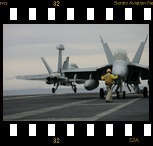
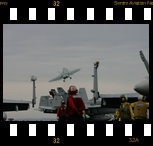
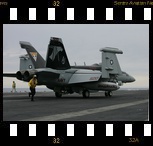
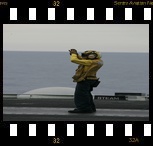
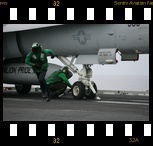
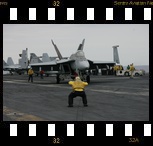
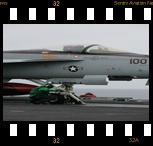
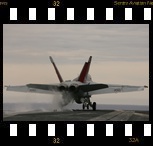
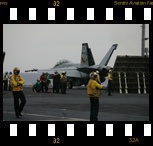
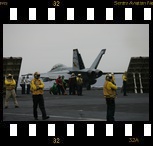
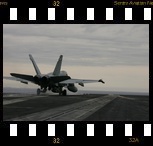
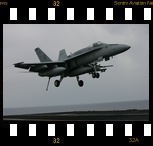
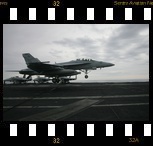
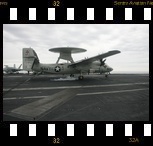
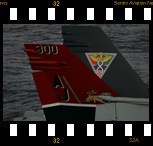
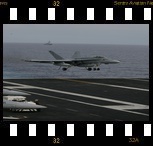
MH-60R
Another newcomer onboard is the MH-60R SeaHawk helicopter of Helicopter Maritime Strike squadron 70 (HSM-70 'Spartans'). The Romeo variant of the MH-60 is fitted with a glass cockpit and has several improvements regarding the sonar, the sensor-package, the datalink and the armament. Was the squadron was previously named HSL-70 for Helicopter Anti-Submarine Light, the new Romeo variant increases the role of the helicopter and resulted in a rename to Helicopter Maritime Strike (HSM). The MH-60R can be distinguished easily from the MH-60S helicopters (used in the Search-and-Rescue and Vertical Replenishment roles by Helicopter Sea Combat Squadron-9, HSC-9 'Tridents') by the chin-mounted pod. On a MH-60R, the pod is facing upwards while on a MH-60S the pod is facing downwards.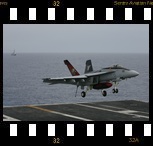
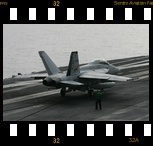
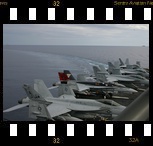
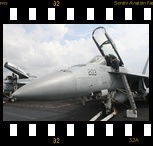
For the deck-crew, the all F-18-wing has a number of advantages, as dimensions and maintenance are more or less the same. The deck-planners of Flight Deck Control (who prepare/handle all aircraft on deck via the 'Ouija -board', using washers, nuts and pins to mimic the status of the aircraft: (un)armed,(un)fueled, etc) prefer this type standardization. Because the larger and heavier F-14 Tomcats and EA-6B Prowlers gave sometimes some maneuvering restrictions; and the weight of a fully loaded, fueled and armed F-14 Tomcat could sometimes outclass the pulling force of a deck-tractor. In the past, the older aircraft were often assigned to the role of flying gasstation for aerial refueling, a role the S-3 Viking performed during the last years in naval service. Today, the new F/A-18E/Fs are equipped with centerline fuelpods to refuel their buddy F/A-18s, the VFA-31 F-18Es use refueling pods with the emblem of 'Felix the cat' next to a fuelpump. The more powerful SuperHormets can carry 4 wingtanks with 1 centerline refueling pod while they can defend themselves with missiles and canons, canceling the number of defenders that were needed for the unarmed S-3s and KA-6s in the early days.
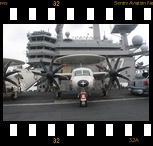
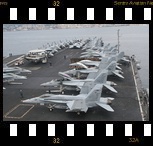
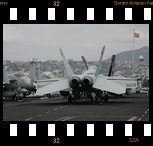
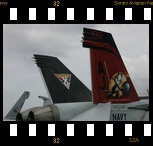
EA-18G
For VAQ-141, this will be the first operational cruise in the electronic warfare role with the Growler, whereby the 2 remaining pilots supported by sophisticated computer power can do more work than the older and more analogue equipped 4-seated EA-6B. Procedures, tactics, doctrines and strategies for the operational use of the Growlers in carrier wings are prepared by the US Navy departments, but most is only written down with a pencil. The lessons learned by VAQ-141 and CVW-8 will be the basis for a renewed set of procedures, doctrines and strategies; every day lessons are learned and improvements are incorporated in the procedures. The EA-18G handbook is changed on a daily basis as the predicted characteristics are outdated by the reality.
The EA-18Gs are standard production F/A-18Fs that will
differ in only 10% with the standard F versions. The role specific hardware is
installed in the empty canon compartment and in pods mounted on the wingtips
and in pods below the wings. As defensive weapons the AIM-120 Advanced
Medium-Range Air-to-Air Missiles (AMRAAM) are carried and as offensive weapons
the AGM-88 High-speed Anti-Radiation Missile (HARM) can be used to attack
electronic targets. If needed, an EA-18G can be refurbished back into an ordinary
F/A-18F, except for the missing canon.
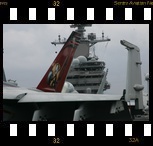
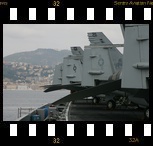
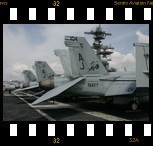
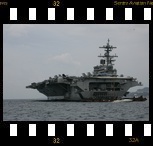
CVW-8 and squadrons
| Squadron | Squadron name | Nickname | Type |
| VFA-15 | Strike Fighter Squadron 15 | Valions | F/A-18 Hornet |
| VFA-31 | Strike Fighter Squadron 31 | Tomcatters | F/A-18E Super Hornet |
| VFA-87 | Strike Fighter Squadron 87 | Golden Warriors | F/A-18 Hornet |
| VFA-213 | Strike Fighter Squadron 213 | Black Lions | F/A-18F Super Hornet |
| VAW-124 | Carrier Airborne Early Warning Squadron 124 | Bear Aces | E-2C Hawkeye |
| VAQ-141 | Electronic Attack Squadron 141 | Shadowhawks | EA-18G Growler |
| VRC-40 | Fleet Logistics Support Squadron 40, Detachement 5 | Rawhides | C-2A Greyhound |
| HSC-9 | Helicopter Sea Combat Squadron 9 | Tridents | MH-60S Knighthawk |
| HSM-70 | Helicopter Maritime Strike Squadron 70 | Spartans | MH-60R Seahawk |


 Back to top of page
Back to top of page Sentry home page.
Sentry home page.